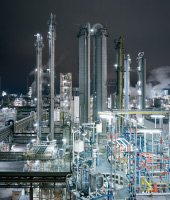Outlook for 2015
WACKER’s main planning assumptions relate to raw-material and energy costs, personnel expenses and exchange rates. For 2015, we are planning on an exchange rate of US$ 1.15 and ¥ 135 to € 1.
Performance Indicators and Value-Based Management
WACKER’s key financial performance indicators are unchanged compared with the previous year.
Group Sales and Volumes Set to Grow in 2015
WACKER expects volumes to rise at every division in 2015. In our planning assumptions, we expect prices for silicon wafers to remain flat and prices for polysilicon to be around the Q4 2014 level. Group sales are expected to increase by a high single-digit percentage – also benefiting from changes in exchange-rate parities.
Economic uncertainties mean the actual performance of the WACKER Group and its divisions could depart from our assumptions, either positively or negatively.
From today’s perspective, sales will climb at our chemical divisions and at WACKER POLYSILICON and Siltronic. We anticipate that Asia will deliver the biggest sales gains for our products. In 2016, sales should increase further compared with 2015 – provided that the world economy remains on its growth path, as predicted by business research institutes, and that there are no unforeseeable slumps in WACKER’s key regions and industries.
Outlook for 2015
|
|
||||
|
|
Reported for 2014 |
Outlook for 2015 |
||
|
|
|
|
||
|
Key Financial Performance Indicators |
|
|
||
|
EBITDA margin (%) |
21.6 |
Substantially lower |
||
|
EBITDA (€ million) |
1,042.3 |
Adjusted for special income; slight increase |
||
|
ROCE (%) |
8.4 |
Lower |
||
|
|
|
|
||
|
Net cash flow (€ million) |
215.7 |
Slightly positive |
||
|
|
|
|
||
|
Supplementary Financial Performance Indicators |
|
|
||
|
Sales (€ million) |
4,826.4 |
High-single-digit % increase |
||
|
Investments (€ million) |
572.2 |
Approx. 700 |
||
|
Net financial debt (€ million) |
1,080.6 |
Increase of between 200 and 300 |
||
|
|
|
|
||
|
Depreciation (€ million) |
599.0 |
Approx. 625 |
||
Outlook for the Key Performance Indicators at the Group Level
From today’s perspective, the principal key performance indicators at Group level will develop as follows:
EBITDA margin and EBITDA: the EBITDA margin will be below the prior year. This is because we do not anticipate a comparably high level of solar-sector special income from damages received and from the restructuring of contractual and delivery relationships with customers. Other factors weighing on our EBITDA margin are the start-up costs for bringing our new Charleston (Tennessee, USA) polysilicon plant on stream and the slightly lower, overall price level in our business. Changes in exchange-rate parities will have a positive impact of about € 100 million on EBITDA. Only about € 40 million of this amount will effectively benefit EBITDA due to changes in the hedging result. Relative to a year earlier, EBITDA should rise modestly, adjusted on a comparable basis to exclude special solar-sector income from damages received and from restructured contractual and delivery relationships with customers. With depreciation slightly up year on year, Group net income will come in below the 2014 figure, due to lower special income and a tax rate of slightly more than 50 percent.
ROCE: compared with a year earlier, ROCE will be lower (2014: 8.4 percent).
Net cash flow: amid higher capital expenditures, we expect net cash flow to be slightly positive in 2015, though substantially below the prior-year level. A major reason for the contraction is the year-on-year decline in special income.
Outlook for Supplementary Performance Indicators at the Group Level
Investments: at about € 700 million, investments will be higher in 2015 due to changes in exchange-rate parities, and will exceed depreciation. In 2015, depreciation will amount to around € 625 million, slightly higher than in 2014. Most of the investments are for constructing the new production site in Charleston, Tennessee (USA). It is unlikely that the anticipated cash flow from operating activities will fully cover capital expenditures. For 2016, investments should decrease significantly.
Investments by Division in 2015

Net financial debt: our net financial debt will climb by between about € 200 million and € 300 million year on year (2014: € 1.08 billion). This increase stems from investments in the new production site in Charleston, Tennessee (USA), and from our polysilicon deliveries to customers for advance payments already received from them.
Divisional Sales and EBITDA Trends
At WACKER SILICONES, we expect to lift sales substantially in 2015 relative to a year earlier. As for raw-material costs, we anticipate somewhat higher prices, especially for silicon metal. Sales growth will be fueled by every WACKER SILICONES business sector. The division’s volume growth will correspond to global GDP expansion. The strongest growth momentum will primarily come from Asia, where rising affluence is prompting higher consumption of silicone products. We also expect the upward trend in sales to continue in the Americas, Europe and the “other” regions. Particular areas of growth are products and applications for personal care, medical technology, and the electrical and electronics sectors, as well as our silane-modified polymers. Further, we want to increase the share of specialty products in overall sales at an above-average rate and keep capacity utilization high. EBITDA should be markedly above the prior-year figure.
At WACKER POLYMERS, our forecast is for robust sales growth compared with last year. On the raw-materials side, we expect the price of vinyl acetate monomer (VAM) to edge down after its strong 2014 rise, though not back to its pre-increase level. Both dispersions and dispersible polymer powders will contribute to sales growth. In dispersions, momentum will come from construction and packaging applications. In dispersible polymer powders, increasing polymer modification is the main growth driver. Regionally, we expect polymer-powder growth to be strongest in the Americas and in Asia, particularly India. In dispersions, we anticipate further sales gains in Asia, especially China and India. As for Europe, we forecast a slight rise in sales. During 2015, WACKER POLYMERS will start up a new polymer-powder dryer and a specialty-monomer plant in Burghausen (Germany), as well as a dispersions plant in Calvert City (USA). On the EBITDA front, we anticipate a marked year-on-year increase.
At WACKER BIOSOLUTIONS, our projection is for substantial sales growth in 2015. Following the complete integration of Scil Proteins Production GmbH in Halle (Germany), we see further growth potential for expanding our biologics business. Thanks to new product developments, we also expect substantial growth in nutrition. Regionally, Asia offers WACKER BIOSOLUTIONS the biggest growth opportunities. In 2015, our Nanjing site in China will start producing PVAc solid resins for gumbase. The current site in Wuxi will close at the end of 2015. EBITDA should show a clear year-on-year increase.
WACKER’s polysilicon business is expected to generate both volume and sales growth in 2015. Our assumption is that the photovoltaic market will continue on its growth trajectory. Nevertheless, overcapacity is still symptomatic of the entire supply chain. As previously, our key objective is to again reduce polysilicon production costs. During the latter half of 2015, we intend to start up our new production site in Charleston, Tennessee (USA). Our EBITDA forecast is for a marked decline against the previous year, since we expect less special income in 2015 in the form of retained advance payments and damages received. EBITDA will also be reduced by start-up costs at our new polysilicon production site in Tennessee (USA).
At Siltronic, we anticipate sales growth for 2015, amid slightly higher volumes and more favorable exchange rates than a year earlier. We expect the market for 300 mm silicon wafers to continue growing. In the 200 mm segment, our projection is for stable demand. Smaller-diameter wafers are likely to experience a slight slowdown in demand. Our EBITDA expectations are for a marked increase on last year.
Future Dividends
WACKER’s policy on dividends is generally oriented toward distributing at least 25 percent of net income to shareholders, assuming the business situation allows this and the committees responsible agree.
Financing
The main aspects of our financing policy remain valid. Even if the debt level rises further in 2015, we are confident that we have a strong financial profile with a sensible capital structure and healthy maturities for our debt. As of December 31, 2014, WACKER had at its disposal unused lines of credit with residual maturities of over one year totaling some € 600 million.
Medium-Term Goals
The medium-term goals through 2017 remain in place. Our focus is on increasing the Group’s profitability and generating a positive cash flow.
WACKER’s Medium-Term Targets through 2017
|
|
||
|
|
Targets for 2017 |
|
|
|
|
|
|
Sales |
€ 6 billion to € 6.5 billion |
|
|
EBITDA |
€ 1.2 billion |
|
|
EBITDA margin |
Approx. 20 percent |
|
|
ROCE |
Over 11 percent |
|
|
Investments |
At the level of or below depreciation |
|
Executive Board Statement on Overall Business Expectations
In 2015, WACKER expects the world economy to grow further, despite the many crises. From today’s perspective, global growth will continue in 2016.
Our expectations for 2015 are for Group sales to rise by a high one-digit percentage, with all five business divisions increasing their sales. Compared with last year, we anticipate a moderate rise in EBITDA, when adjusted on a comparable basis to exclude special income. The EBITDA margin, on the other hand, will be lower, in large part due to the start-up costs for our new production site in Charleston, Tennessee (USA). In total, energy and raw-material costs will decrease slightly compared with last year. Overall, we expect certain sectors of our business to see slightly lower prices.
Capital expenditures will be higher than last year, climbing to about € 700 million. Depreciation will amount to around € 625 million, slightly higher than the prior-year level. We expect a slightly positive net cash flow. Net financial debt will climb by between around € 200 million and € 300 million, primarily due to investments in Tennessee (USA). Group net income is projected to be lower than last year.
WACKER supplies outstanding products and holds at least a No. 3 position in the markets of its four biggest divisions. The Group’s technological and innovative strength and its presence in key markets offer us a firm basis for reinforcing and even expanding our market positions.
We see good opportunities in 2015 for further sales gains and for moderate growth in EBITDA, adjusted on a comparable basis to exclude special income. Given our current strategy, we consider WACKER well equipped to continue growing profitably beyond 2015.
There were no changes to our forecast up to the date of preparing these financial statements.



